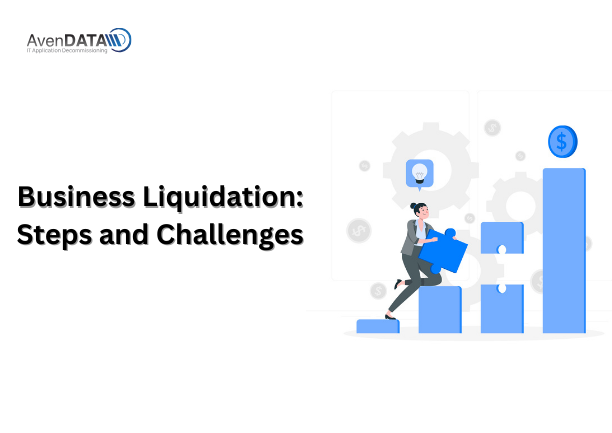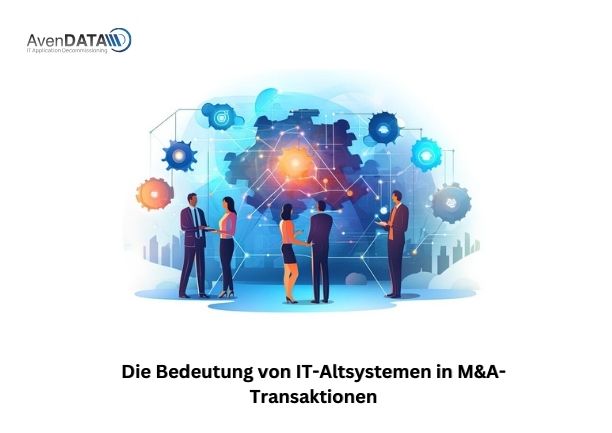Funding and acquisitions in Indian startup this week [01 – 06 July]
This week, 24 Indian startups raised $270.3 million, with 4 growth-stage deals totaling $234.2 million and 20 early-stage deals a... View MoreFunding and acquisitions in Indian startup this week [01 – 06 July]
This week, 24 Indian startups raised $270.3 million, with 4 growth-stage deals totaling $234.2 million and 20 early-stage deals at $36.13 million. Leading growth-stage deals included Purplle’s $120 million and OYO’s $50 million rounds. In early-stage, Comet and Watch Your Health were notable. City-wise, Bengaluru led with seven deals. Seed funding topped the series with six deals. Japanese automaker Suzuki launched a Rs 340 crore social impact fund. Significant hires, acquisitions, and closures, including Unacademy layoffs and Koo’s shutdown, marked the week.
#Entrackr #IndianStartups #StartupFunding #TechStartups #WeeklyFunding #Funding #Acquisitions #WeeklyFundingReport #FundingReport #Report
https://entrackr.com/2024/07/funding-and-acquisitions-in-indian-startup-this-week-01-06-july/
Funding and acquisitions in Indian startup this week [01 - 06 July]
This week, 24 Indian startups raised around $270.3 million in funding. These deals count 4 growth-stage deals and 20 early-stage deals. In the previous week, over 25 early and growth-stage startups cu
Funding and acquisitions in Indian startups this week [19-24 Feb]
This week as many as 26 Indian startups raised funding amounting to nearly $129.5 million. These deals count five growth-stage deals ... View MoreFunding and acquisitions in Indian startups this week [19-24 Feb]
This week as many as 26 Indian startups raised funding amounting to nearly $129.5 million. These deals count five growth-stage deals and 19 early-stage deals.
#Funding #acquisitions #Indianstartups #Entrackr
https://entrackr.com/2024/02/funding-and-acquisitions-in-indian-startups-this-week-19-24-feb/
Funding and acquisitions in Indian startups this week [19-24 Feb]
This week as many as 26 Indian startups raised funding worth $129.5 million. These deals count five growth-stage and 19 early-stage deals
Funding and acquisitions in Indian startups this week [15-20 Jan]
This week, 28 Indian startups raised $178 million, comprising 2 growth stage and 22 early stage deals. Notable transactions include W... View MoreFunding and acquisitions in Indian startups this week [15-20 Jan]
This week, 28 Indian startups raised $178 million, comprising 2 growth stage and 22 early stage deals. Notable transactions include Wow! Momo and OneCard. Bengaluru led in city-wise deals. Series A stage dominated with 10 deals, reflecting a 13.2% funding surge from the previous week. M&A activity included acquisitions by Innovaccer, Synup, DMI Group, and Qlik. Financial results of several companies were disclosed. Legal developments involved the dismissal of appeals against Google's app billing policy by the Madras High Court. Positive trends in funding signify a thriving startup ecosystem, coupled with notable news from Ola Electric, SoftBank's exit from PolicyBazaar, and KKR's potential investment in BookMyShow.
#Entrackr #Fintackr #Funding #Acquisitions #WeeklyFundingReport #Report #WeeklyReport #News #Startups #StartupNews #IndianStartups
https://entrackr.com/2024/01/funding-and-acquisitions-in-indian-startups-this-week-15-20-jan/
Funding and acquisitions in Indian startups this week [15-20 Jan]
Following the spurt in the number of deals last week, this week 28 startups raised $178 million including two growth and 22 early stage deals
Evaluating Success in Mergers and Acquisitions: Key Performance Indicators and Metrics
Mergers and acquisitions (M&A) represent pivotal moments in the life of a company, but their true success is mea... View MoreEvaluating Success in Mergers and Acquisitions: Key Performance Indicators and Metrics
Mergers and acquisitions (M&A) represent pivotal moments in the life of a company, but their true success is measured not just by the completion of the deal but by the long-term impact on business performance. In this blog post, we’ll delve into the crucial aspect of evaluating M&A success, exploring the key performance indicators (KPIs) and metrics that provide meaningful insights.
1. Financial Performance Metrics:
The most obvious and immediate indicators of Mergers and acquisitions success are financial metrics. Evaluate revenue growth, profitability, and cash flow against pre-deal projections. Additionally, analyze return on investment (ROI) and earnings before interest, taxes, depreciation, and amortization (EBITDA) to gauge the financial health of the integrated entity.
2. Integration Timeline Adherence:
Efficient integration is essential for realizing synergies. Measure success by comparing the actual integration timeline against the initially planned schedule. Timely execution reflects effective project management and minimizes disruptions to business operations.
3. Employee Retention Rates:
A successful M&A isn’t just about numbers; it’s about people. Monitor employee retention rates to ensure that key talent is retained post-merger. High turnover can indicate cultural misalignment or dissatisfaction, potentially impacting productivity and organizational stability.
4. Customer Retention and Satisfaction:
Customer loyalty is a valuable indicator of M&A success. Track customer retention rates and gather feedback to assess satisfaction levels. A dip in customer satisfaction or a notable loss of clientele may signal integration challenges affecting service quality.
5. Cultural Integration:
Culture plays a significant role in M&A success. Implement surveys and qualitative assessments to measure cultural integration. A harmonious workplace culture fosters collaboration, innovation, and overall employee well-being.
6. Market Share Growth:
Monitor changes in market share to gauge the impact of M&A on competitive positioning. An increase in market share indicates successful integration and the ability to capture a larger portion of the market.
7. Synergy Realization:
One of the primary goals of M&A is to achieve synergies that enhance overall performance. Evaluate whether anticipated synergies, such as cost savings and operational efficiencies, are realized. This directly impacts the financial health and competitiveness of the integrated entity.
8. Stakeholder Communication Effectiveness:
Assess the effectiveness of communication strategies with various stakeholders, including employees, customers, and investors. Transparent and timely communication fosters trust, mitigates uncertainty, and contributes to a positive perception of the merger.
9. Legal and Regulatory Compliance:
Ensure compliance with legal and regulatory requirements throughout and post-merger. Regulatory challenges or legal issues can impede operations and tarnish the reputation of the integrated entity.
10. Innovation and Productivity:
An M&A should not stifle innovation or productivity. Track changes in innovation metrics and overall productivity levels. A successful merger should enhance the capacity for innovation and maintain or improve productivity across the organization.
Conclusion:
Evaluating success in mergers and acquisitions requires a multifaceted approach. By considering financial, cultural, and operational aspects, businesses can gain a comprehensive understanding of the impact of M&A on their overall performance. Monitoring these key performance indicators and metrics ensures that the benefits of the merger extend beyond the deal’s completion, laying the foundation for sustained success in the evolving business landscape.
Know more : https://avendata.com/mergers-acquisitions
#mergersandacquisitions #itmergers #avendata #acquisitions #legacysystems
Mergers and acquisitions (M&A) have undergone a paradigm shift with the increasing integration of technology into business operations. In this era of digital transformation, the role of technology in ... View MoreMergers and acquisitions (M&A) have undergone a paradigm shift with the increasing integration of technology into business operations. In this era of digital transformation, the role of technology in M&A is not just significant; it’s transformative. Let’s delve into how organizations can leverage digital advancements for successful mergers and acquisitions.
1. Streamlining Due Diligence with Data Analytics:
Digital transformation facilitates advanced data analytics, enabling organizations to conduct more thorough and efficient due diligence. By leveraging big data and analytics tools, companies can gain deep insights into the financial, operational, and cultural aspects of their potential partners.
2. Cloud-Based Collaboration for Global Integration:
Cloud technology is a game-changer in M&A scenarios, especially for organizations with global footprints. Cloud-based collaboration tools facilitate seamless communication and integration between disparate teams, ensuring a smooth transition post-merger.
3. Automation in Integration Processes:
The integration phase of M&A can be complex, involving the harmonization of various business processes. Automation technologies, such as robotic process automation (RPA), can significantly reduce the time and effort required for integration, minimizing disruptions to ongoing operations.
4. Cybersecurity Measures for Data Protection:
As organizations consolidate their systems and data, the risk of cyber threats increases. Robust cybersecurity measures are crucial to protect sensitive information during M&A activities. Implementing advanced cybersecurity solutions ensures a secure environment for both organizations involved.
5. AI-driven Decision Support:
Artificial Intelligence (AI) plays a pivotal role in decision-making during M&A. AI-driven algorithms can analyze vast datasets to identify potential risks, forecast market trends, and provide valuable insights that aid in making informed strategic decisions.
6. Integration of ERP Systems for Operational Efficiency:
Enterprise Resource Planning (ERP) systems integration is a key aspect of M&A in the digital age. Aligning financial, HR, and operational systems through ERP solutions enhances overall operational efficiency and provides a unified view of the consolidated entity.
7. Digital Communication Strategies for Stakeholder Engagement:
Effective communication is paramount in M&A transactions. Digital communication strategies, including social media and interactive platforms, can be employed to engage stakeholders transparently, managing expectations and mitigating uncertainties.
8. Agile Project Management Tools for Timely Execution:
Digital project management tools, utilizing agile methodologies, contribute to the timely execution of M&A plans. These tools enhance collaboration, adaptability, and responsiveness to changes, ensuring that the integration process stays on course.
9. Post-Merger Data Migration Strategies:
Data migration is a critical aspect of M&A, and digital solutions offer sophisticated methods for seamless transition. Implementing comprehensive data migration strategies ensures that valuable information is transferred accurately and securely.
10. Continuous Technological Evaluation for Long-term Success:
The digital landscape is ever-evolving. Organizations engaged in M&A should adopt a mindset of continuous technological evaluation. Regularly assessing and incorporating emerging technologies ensures that the integrated entity remains competitive and future-ready.
Conclusion: Transforming M&A for the Digital Age
In conclusion, the integration of technology into M&A processes is no longer optional; it’s imperative for success. Organizations that strategically leverage digital transformation not only navigate the complexities of M&A more efficiently but also position themselves as industry leaders in an era where adaptability and innovation are key to sustained success. Embracing the digital evolution in M&A is not just a choice; it’s the pathway to a transformative future.
Know more : https://avendata.com/mergers-acquisitions
#mergers #itmergers #acquisitions #avendata #legacysystems
Mergers & Acquisitions | AvenDATA
Do you have a future requirement to archive a system due to a company Mergers & Acquisitions? We can archive your data from the legacy system.
Business liquidation is a step that many entrepreneurs hope they never have to take. Nevertheless, it may become necessary under certain circumstances, whether due to financial difficulties, a change ... View MoreBusiness liquidation is a step that many entrepreneurs hope they never have to take. Nevertheless, it may become necessary under certain circumstances, whether due to financial difficulties, a change in strategy, or other reasons. In this blog article, we will delve into the process of business liquidation and explore the steps and challenges that entrepreneurs can expect along the way.
What Is Business Liquidation?
Business liquidation is the process of dissolving and winding up a company. This can occur for various reasons, such as insolvency, business closure, or a strategic decision by the owner. The process involves converting company assets into cash to settle liabilities and distribute the remaining funds among shareholders.
Steps in Business Liquidation
Business liquidation occurs in several steps:
1. Decision to Liquidate: The first step is the decision by the owner or the board to liquidate the business.
2. Appointment of a Liquidator: A liquidator is appointed to oversee and manage the liquidation process.
3. Inventory and Valuation: The company’s assets and liabilities are recorded and assessed.
4. Settlement of Liabilities: Liabilities are paid if there are sufficient funds available.
5. Sale of Assets: Company assets are sold to generate cash.
6. Fulfillment of Contractual Obligations: Ongoing contracts and obligations of the company are either fulfilled or terminated.
7. Tax and Legal Requirements: Tax and legal obligations are met.
8. Distribution of Assets: After settling all liabilities, any remaining assets are distributed to shareholders.
Challenges in Business Liquidation
Business liquidation may present various challenges:
1. Complexity: The liquidation process can be complex, especially if the company has many assets or liabilities.
2. Time and Resource Intensive: Liquidation requires time and resources to navigate through the various steps properly.
3. Legal Aspects: Compliance with all legal requirements and contracts can be challenging.
4. Sale of Assets: Selling assets can be difficult and often involves negotiations and transactions.
5. Emotional Stress: The liquidation of a business can be emotionally taxing, as it often marks the end of years of entrepreneurship.
Conclusion
Business liquidation is a complex process that requires careful planning and execution. Entrepreneurs facing this situation should seek professional advice in a timely manner and plan the steps of liquidation carefully. Proper liquidation can help protect assets and settle liabilities before the company ceases operations.
Know more : https://avendata.com/liquidation
#itliquidation #liquidation #acquisitions #avendata
Die Bedeutung von IT-Altsystemen in M&A-Transaktionen
Mergers and Acquisitions (M&A) sind komplexe Geschäftsprozesse, bei denen Unternehmen fusionieren, sich aufteilen oder andere Unternehmen erwerb... View MoreDie Bedeutung von IT-Altsystemen in M&A-Transaktionen
Mergers and Acquisitions (M&A) sind komplexe Geschäftsprozesse, bei denen Unternehmen fusionieren, sich aufteilen oder andere Unternehmen erwerben. Diese Transaktionen können beträchtliche Auswirkungen auf die IT-Infrastruktur haben, insbesondere auf IT-Altsysteme. In diesem Blogbeitrag werden wir die Bedeutung von IT-Altsystemen in M&A-Transaktionen beleuchten und aufzeigen, warum sie ein wesentlicher Faktor für den Erfolg solcher Unternehmenszusammenschlüsse sind.
Die Rolle von IT-Altsystemen
IT-Altsysteme sind ältere, oft veraltete IT-Lösungen, die in einem Unternehmen im Einsatz sind. Diese Systeme können kritische Geschäftsprozesse unterstützen, historische Daten speichern und spezielle Funktionen bieten, die im Laufe der Jahre entwickelt wurden. In M&A-Transaktionen spielen IT-Altsysteme eine bedeutende Rolle aus verschiedenen Gründen:
1. Daten und Historie: IT-Altsysteme speichern oft historische Daten, die für die Compliance und Geschäftsanalyse unerlässlich sind.
2. Integration: IT-Altsysteme sind häufig tief in die Geschäftsprozesse integriert, und ihre Auslagerung oder Ablösung kann schwierig und kostspielig sein.
3. Kritische Funktionen: In einigen Fällen bieten Altsysteme spezialisierte Funktionen, die moderne Systeme möglicherweise nicht replizieren können.
Herausforderungen und Chancen
Die Bedeutung von IT-Altsystemen in M&A-Transaktionen bringt sowohl Herausforderungen als auch Chancen mit sich:
Herausforderungen:
Komplexität: Die Integration von Altsystemen in die bestehende IT-Infrastruktur des erworbenen Unternehmens kann äußerst komplex sein.
Sicherheit: Ältere Systeme sind anfälliger für Sicherheitsrisiken und erfordern besondere Aufmerksamkeit.
Wartungskosten: Die Wartung von Altsystemen kann teuer sein, insbesondere wenn es an Fachkräften mangelt.
Chancen:
Datenwert: Historische Daten in Altsystemen können wertvolle Einblicke bieten und strategische Entscheidungen unterstützen.
Wettbewerbsvorteil: Die Fähigkeit, Altsysteme effizient zu integrieren und zu nutzen, kann einen Wettbewerbsvorteil verschaffen.
Kostenoptimierung: Durch die Bewertung und gezielte Optimierung von Altsystemen können Kosten eingespart werden.
Die Rolle der IT-Due Diligence
In M&A-Transaktionen ist die IT-Due Diligence von entscheidender Bedeutung. Sie beinhaltet die sorgfältige Prüfung aller IT-Aspekte, einschließlich der Bewertung von IT-Altsystemen. Eine umfassende Due Diligence hilft, Risiken zu identifizieren und sicherzustellen, dass die IT-Infrastruktur nahtlos in die neue Organisation integriert werden kann.
Fazit
Die Bedeutung von IT-Altsystemen in M&A-Transaktionen ist nicht zu unterschätzen. Diese Systeme können sowohl Herausforderungen als auch Chancen bieten. Eine gründliche IT-Due Diligence ist unerlässlich, um sicherzustellen, dass die IT-Infrastruktur den Anforderungen der fusionierten Unternehmen gerecht wird und einen reibungslosen Übergang ermöglicht. Mit der richtigen Strategie und Planung können Unternehmen die Potenziale von IT-Altsystemen in M&A-Transaktionen ausschöpfen.
Mehr wissen : https://avendata.com/de/unternehmenszu-und-verkaeufe
#mergers #acquisitions #avendata #itapplication #legacysystems
Navigating the IT Landscape: Financial Due Diligence in M&A
Mergers and Acquisitions (M&A) in the IT world are dynamic transactions, often characterized by rapid changes, innovation, and a high degre... View MoreNavigating the IT Landscape: Financial Due Diligence in M&A
Mergers and Acquisitions (M&A) in the IT world are dynamic transactions, often characterized by rapid changes, innovation, and a high degree of risk. When tech companies come together, the potential for synergy and growth is immense. However, this potential can quickly erode if financial due diligence isn’t at the forefront of the M&A process. In this blog, we’ll explore the vital role of financial due diligence in M&A within the IT industry, emphasizing its unique challenges and the path to success.
The IT Landscape and Financial Due Diligence
In the fast-paced IT industry, M&A activities are common. Companies aim to acquire technological capabilities, expand their market presence, or stay ahead of the competition. Financial due diligence plays a crucial role in these transactions.
Why is it Unique?
Rapid Technological Changes: IT environments change rapidly. Technology that’s cutting-edge today may become obsolete in a few years. Assessing the financial health of a target company in this context requires a keen understanding of market dynamics.
Intangible Assets: In the IT world, intangible assets like intellectual property, patents, and proprietary software often hold more value than physical assets. Evaluating these assets requires a unique set of skills and tools.
Cybersecurity Risks: IT companies are highly susceptible to cybersecurity threats. A thorough financial due diligence process must assess the target’s security measures and the potential financial impact of a breach.
Key Considerations in IT-Related M&A Due Diligence
Successful financial due diligence in IT-related M&A demands a comprehensive approach. Here are some essential considerations:
Technology Stack Assessment: Understanding the target’s technology stack, its scalability, and alignment with the acquiring company’s infrastructure is crucial. Compatibility issues can lead to post-acquisition disruptions.
Intellectual Property Evaluation: Scrutinizing patents, copyrights, and trademarks is essential. It ensures that the acquiring company is not exposed to legal risks or potential lawsuits.
Market and Competitive Analysis: Assess the target’s position in the market and its competitive landscape. Financial health should be evaluated in the context of market dynamics.
Talent and Human Capital: Human capital is often the heart of IT companies. Retaining key talent and assessing the cost of workforce transition should be part of due diligence.
Success Stories in IT M&A Due Diligence
A prime example of effective financial due diligence in the IT world is Microsoft’s acquisition of LinkedIn. By meticulously examining LinkedIn’s financials, technology infrastructure, and potential synergies, Microsoft was able to leverage the professional networking platform’s user base and capabilities, resulting in a highly successful integration.
The Path to Success
In IT M&A, the path to success through financial due diligence involves:
Adept Professionals: Engaging professionals with a deep understanding of both financial analysis and IT is crucial.
Customized Approaches: Tailoring due diligence approaches to the unique attributes of the IT industry is vital.
Risk Management: Identifying and quantifying risks, especially those related to technology and cybersecurity, is paramount.
Communication: Effective communication with stakeholders is vital, as the outcome of IT-related M&A often hinges on retaining talent and integrating technology seamlessly.
In Conclusion
In the ever-evolving IT world, financial due diligence in M&A is not just a necessity; it’s a strategic imperative. With unique challenges related to technology, intangible assets, and market dynamics, financial due diligence is the compass that ensures a successful M&A journey. By understanding these nuances, engaging experienced professionals, and customizing approaches, IT companies can unlock the full potential of M&A transactions and create a path to innovation, growth, and sustained success.
Know more : https://avendata.com/mergers-acquisitions
#mergerandqcquisitions #itmergers #acquisitions #avendata
Funding and acquisitions in Indian startups this week [10-15 Apr]
This week, 27 Indian startups raised funding of about $245 million. PhonePe and U Gro Capital were the top fundraising startups and s... View MoreFunding and acquisitions in Indian startups this week [10-15 Apr]
This week, 27 Indian startups raised funding of about $245 million. PhonePe and U Gro Capital were the top fundraising startups and scooped up $100 and $41.3 million, respectively. Last week, the fund inflow in the Indian startups stood at $565 million.
#Funding #acquisitions #startups #fundraising #Entrackr
https://entrackr.com/2023/04/funding-and-acquisitions-in-indian-startups-this-week-10-15-apr/
Funding and acquisitions in Indian startups this week [10-15 Apr]
This week, 27 Indian startups raised funding of about $245 million. PhonePe and U Gro Capital were the top fundraising startups.
Funding and acquisitions in Indian startups this week [20-25 Mar]
This week, 15 Indian startups raised funding of about $195 million. Stashfin and Charge+Zone were the top fundraising startups and sc... View MoreFunding and acquisitions in Indian startups this week [20-25 Mar]
This week, 15 Indian startups raised funding of about $195 million. Stashfin and Charge+Zone were the top fundraising startups and scooped up $100 and $54 million, respectively.
#Funding #acquisitions #startups #fundraising #Entrackr
https://entrackr.com/2023/03/funding-and-acquisitions-in-indian-startups-this-week-20-25-mar/
Funding and acquisitions in Indian startups this week [20-25 Mar]
This week, 15 Indian startups raised funding of about $195 million. Stashfin and Charge+Zone were the top fundraising startups
page=1&year=&month=&hashtagsearch=Acquisitions
Load More











